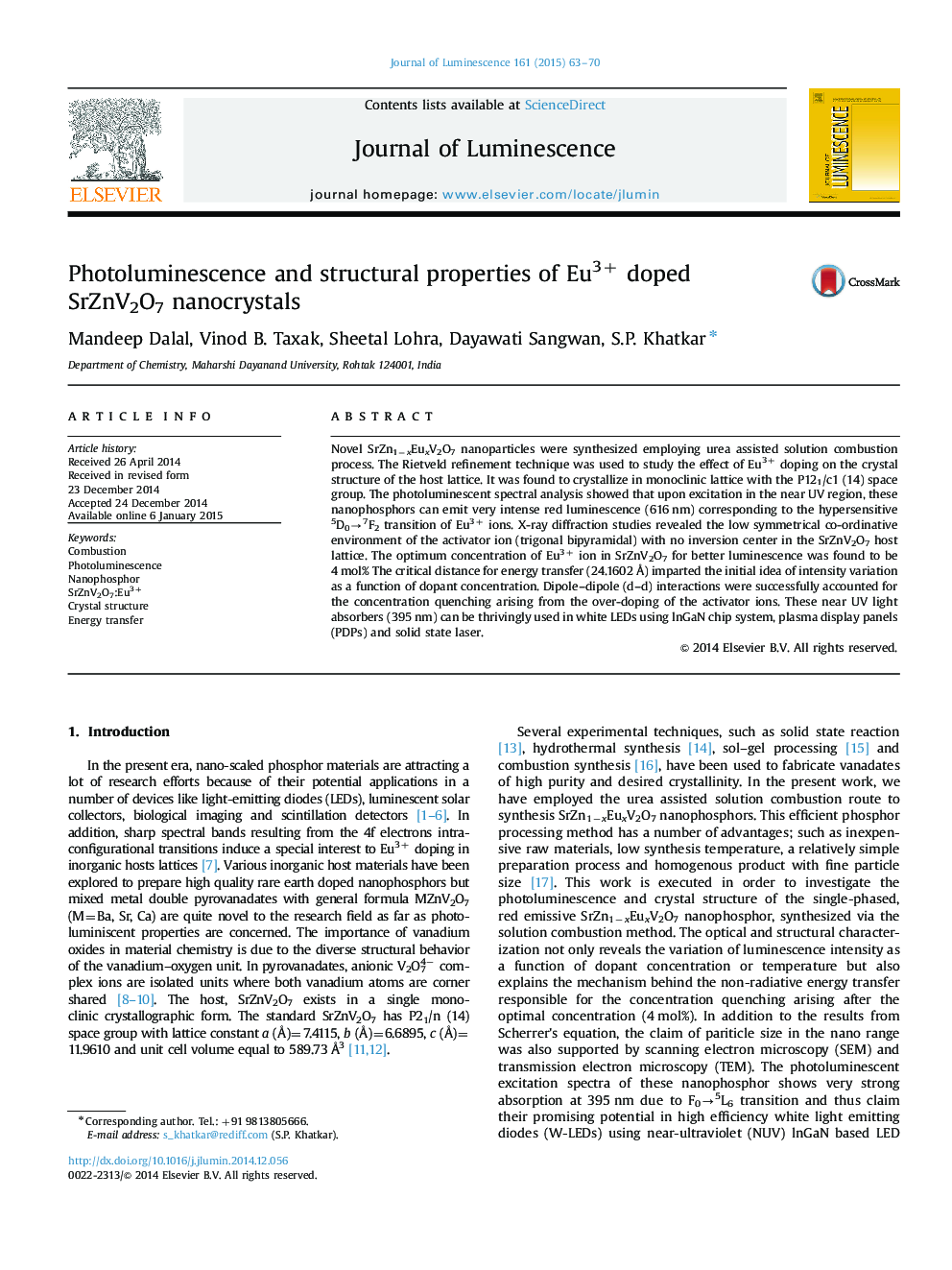| Article ID | Journal | Published Year | Pages | File Type |
|---|---|---|---|---|
| 5398925 | Journal of Luminescence | 2015 | 8 Pages |
Abstract
Novel SrZn1âxEuxV2O7 nanoparticles were synthesized employing urea assisted solution combustion process. The Rietveld refinement technique was used to study the effect of Eu3+ doping on the crystal structure of the host lattice. It was found to crystallize in monoclinic lattice with the P121/c1 (14) space group. The photoluminescent spectral analysis showed that upon excitation in the near UV region, these nanophosphors can emit very intense red luminescence (616Â nm) corresponding to the hypersensitive 5D0â7F2 transition of Eu3+ ions. X-ray diffraction studies revealed the low symmetrical co-ordinative environment of the activator ion (trigonal bipyramidal) with no inversion center in the SrZnV2O7 host lattice. The optimum concentration of Eu3+ ion in SrZnV2O7 for better luminescence was found to be 4Â mol% The critical distance for energy transfer (24.1602Â Ã
) imparted the initial idea of intensity variation as a function of dopant concentration. Dipole-dipole (d-d) interactions were successfully accounted for the concentration quenching arising from the over-doping of the activator ions. These near UV light absorbers (395Â nm) can be thrivingly used in white LEDs using lnGaN chip system, plasma display panels (PDPs) and solid state laser.
Related Topics
Physical Sciences and Engineering
Chemistry
Physical and Theoretical Chemistry
Authors
Mandeep Dalal, Vinod B. Taxak, Sheetal Lohra, Dayawati Sangwan, S.P. Khatkar,
